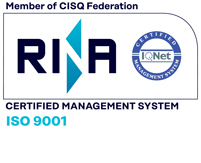Iran
GROWTH FORECAST FOR IRAN ECONOMY
Iran’s economic growth stood at 3.7% during the nine months ending Dec. 21, 2022, which is lower than that registered in the preceding year’s corresponding period. Where did this economic growth come from? Will the same sources bring about positive economic growth for the country in the current fiscal year [started March 21]? Sajjad Barkhordari, associate professor of economics in the University of Tehran prefaced his write-up for the Persian daily Donya-e-Eqtesad with these questions. A translation of the text follows: The Central Bank of Iran’s report shows that the economy expanded by 3.7% in the Q3 of the fiscal 2022-23 with oil and 3.2% without oil, which is lower than that in the same period of the previous year, when the economy grew by 4.4% with oil and 3.9% without oil. We need to study the supply and demand side to understand the origin of this growth.Supply SideFrom the supply side, economic growth reflects the total growth of production in agriculture, oil, industries and mines, and the services sectors. According to official statistics, oil sector expanded by 9.3%, industries and mines by 5.6% (the highest rate among all groups) and agriculture grew by 1.1% (the lowest rate) in Q3 of FY 2022-23. Given the big share of services in the Iranian economy, the sector accounted for 1.6% of the 3.7% growth during the period under review; the industries and mines sector came in second with a 1.3% expansion. As you see, services and industries and mines were the main drivers of growth in Q3.The key point is that “transportation and warehousing” subgroup and the “wholesale, retail and vehicle repair” subgroup accounted for 0.9% and 0.7% of the 1.6% growth in the services sector, respectively. Other subgroups of services such as “information and communication”, “financial and insurance” and “real-estate activities” saw positive growth, but the negative growth of the sub-groups, namely “public administration”, “defense and social security” and “education” accounted for 1.6% of the total growth via services. Demand SideOn the demand side, the growth of final consumption costs of the private sector, final consumption costs of the public sector, gross fixed capital formation (machinery, construction and other capital formation) and changes in inventory and net exports of goods and services (exports and imports of goods and services), determine economic growth.By studying the components of the demand side, we observe that the final consumption costs of the private sector and the formation of gross fixed capital both grew by 7.7% in the nine-month period of 2022-23. Fixed capital formation registered a positive growth of 7.7% in Q3 of 2022-23 compared with the negative growth of 5.2% in Q3 of 2021-22.The final consumption expenses of the public sector in the nine months of 2022-23 posted a negative growth of 0.7%. In Q3 of 2022-23, the export and import of goods and services both increased by 9.2% year-on-year. The net growth of exports of goods and services was 9.1%, suggesting that the net growth of exports of goods and services, private sector consumption and of gross fixed capital formation were the main drivers of economic growth in Q3 of last year. The growth of gross fixed capital formation in the machinery sector was 28.3% in Q3, higher than the same period of the year before. The growth of gross fixed capital formation in the construction sector, despite being positive, was less than 1%. (ICE TEHERAN)
Fonte notizia: Financial Tribune




